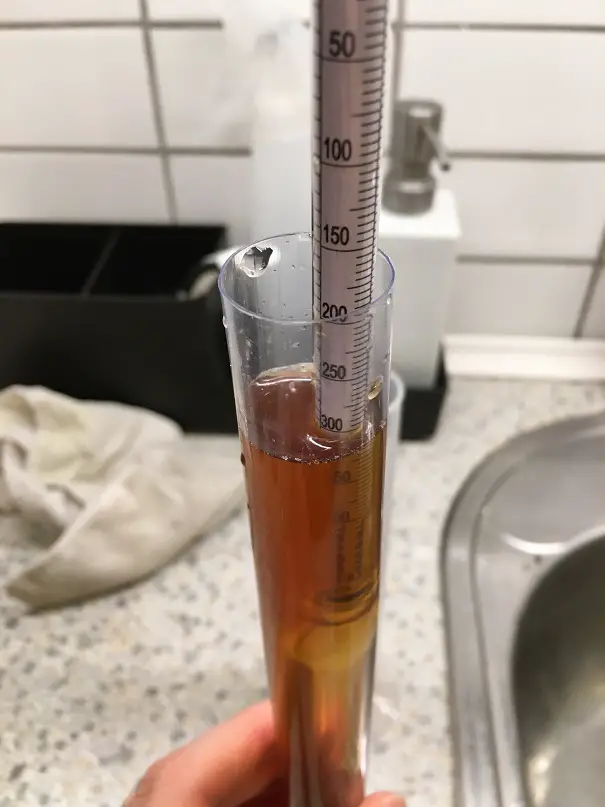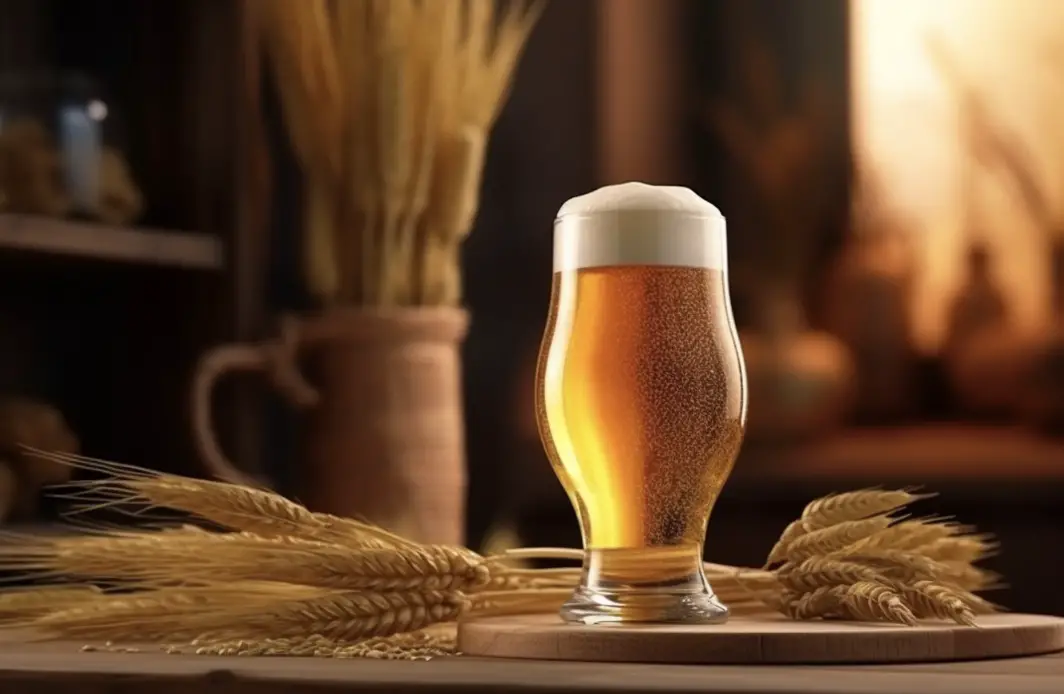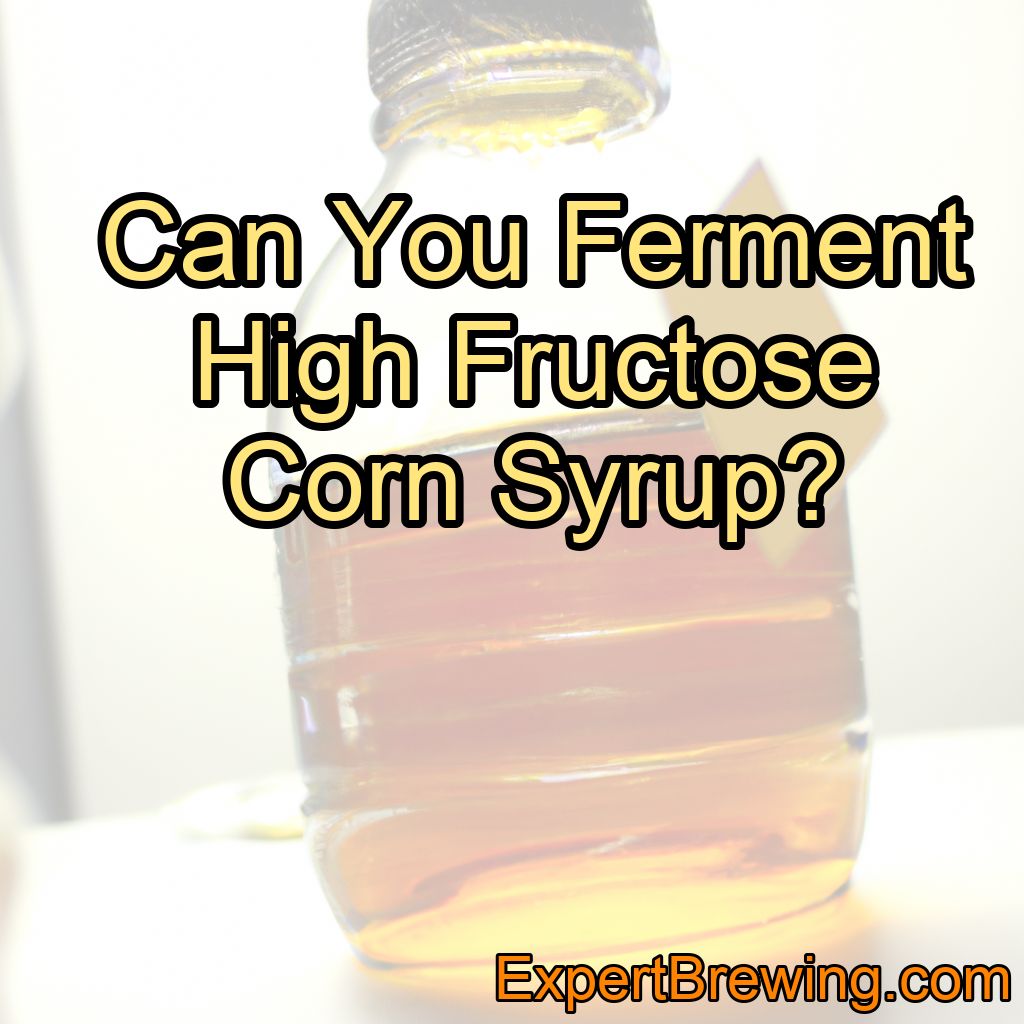As a homebrewer, I am always on the lookout for new and interesting ingredients to ferment. One day, while browsing through a brewing forum, I came across a discussion on fermenting maple syrup. This piqued my interest, as I had never considered using maple syrup as a base for fermentation.
So, I decided to dive into the world of maple syrup fermentation and see if it was indeed possible. In this blog post, I will share my experiences and findings on this unique fermentation process.
The Science Behind Fermenting Maple Syrup
Can you ferment maple syrup? Yes, you can ferment maple syrup if diluted with water and yeast nutrients are added to support the fermentation process.
Before I began my experiment, I wanted to understand the science behind fermenting maple syrup. Maple syrup is a concentrated sugar solution derived from the sap of maple trees.
The main sugar present in maple syrup is sucrose, which can be easily fermented by most strains of yeast.

However, unlike other fermentable sugars like malt extract or honey, maple syrup lacks the necessary nutrients to support healthy yeast growth.
This means that in order to successfully ferment maple syrup, it is crucial to dilute the syrup with water and add yeast nutrients to provide the necessary nutrients for the yeast to thrive.
Choosing the Right Yeast
Another important factor in fermenting maple syrup is choosing the right yeast strain. Since maple syrup is high in sucrose, it’s essential to select a yeast strain that can efficiently ferment this type of sugar.
After researching various yeast strains, I decided to go with a wine yeast like Lalvin EC-1118 or Red Star Premier Blanc.
These yeasts are known for their ability to ferment a variety of sugars, including sucrose, and have a high alcohol tolerance, making them suitable for fermenting maple syrup.
Diluting Maple Syrup for Fermentation
Now that I had chosen my yeast strain, it was time to prepare the maple syrup for fermentation. Since maple syrup is a highly concentrated sugar solution, it was necessary to dilute it with water to achieve a suitable specific gravity for fermentation.

I aimed for a starting specific gravity of around 1.080, which would result in a final alcohol content of around 10-12% ABV.
To achieve this, I mixed one part maple syrup with two parts water. For example, if using one gallon of maple syrup, I would add two gallons of water. This created a mixture with a specific gravity close to my target. It’s essential to take a hydrometer reading at this stage to confirm the specific gravity of your mixture.
Adding Yeast Nutrients
As I mentioned earlier, maple syrup lacks most of the necessary nutrients to support healthy yeast growth. Therefore, it was essential to add yeast nutrients to the mixture.
I used a combination of diammonium phosphate (DAP), yeast hulls, and yeast energizer to provide the necessary nitrogen, vitamins, and minerals required for healthy yeast growth.
I added the yeast nutrients according to the manufacturer’s instructions, which typically recommend adding them in stages throughout the fermentation process. It’s important to follow these guidelines to ensure that the yeast receives the necessary nutrients at the appropriate times.
Pitching the Yeast
Once the maple syrup mixture was diluted and the yeast nutrients were added, it was time to pitch the yeast.
I rehydrated the yeast according to the manufacturer’s instructions and then pitched it into the maple syrup mixture.
It’s essential to ensure that the mixture is at the appropriate temperature for pitching the yeast, typically around 70°F (21°C).
Fermentation Temperature and Time
For the fermentation process, I maintained a consistent temperature of around 60-65°F (15-18°C). This is slightly cooler than the typical fermentation temperature for ales, but it helped to prevent the production of off-flavors and resulted in a cleaner-tasting final product.
Fermentation time can vary depending on the yeast strain and fermentation conditions, but I found that the fermentation process took approximately two weeks to complete. It’s essential to monitor the specific gravity throughout the fermentation process to determine when fermentation is complete.
Once the specific gravity remains stable for several days, it is safe to assume that fermentation has finished.
Racking and Aging
After fermentation was complete, I racked the fermented maple syrup into a secondary fermentation vessel to allow it to age and clarify.
I aged the maple syrup wine for several months, periodically checking for clarity and flavor development.

The aging process allowed the flavors to mellow and develop, resulting in a smoother and more refined final product.
Bottling and Carbonation
Once the maple syrup wine had aged to my satisfaction, it was time to bottle and carbonate it. I opted to carbonate the maple syrup wine to give it a sparkling character, similar to a sparkling wine or hard cider.
To do this, I added a small amount of priming sugar to each bottle before filling it with the maple syrup wine. I then capped the bottles and allowed them to carbonate at room temperature for several weeks.
It resulted in a fun sparkling wine type of drink without too much taste, but quite refreshing!
Conclusion
So, can you ferment maple syrup? Absolutely! By diluting the syrup with water, adding yeast nutrients, and using a suitable yeast strain, it is possible to create a delicious and unique fermented beverage. Here are ten facts about fermenting maple syrup that I discovered throughout this process:
1. Maple syrup can be successfully fermented if diluted with water and yeast nutrients are added.
2. The main sugar in maple syrup is sucrose, which can be easily fermented by most yeast strains.
3. Wine yeast strains like Lalvin EC-1118 or Red Star Premier Blanc are suitable for fermenting maple syrup due to their ability to ferment a variety of sugars and high alcohol tolerance.
4. Diluting maple syrup with water helps achieve a suitable specific gravity for fermentation, typically around 1.080.
5. Adding yeast nutrients like diammonium phosphate, yeast hulls, and yeast energizer is crucial to support healthy yeast growth.
6. Fermentation temperature should be maintained at around 60-65°F (15-18°C) for best results.
7. Fermentation can take approximately two weeks to complete, but it’s essential to monitor specific gravity throughout the process.
8. Racking and aging the fermented maple syrup can help improve clarity and flavor development.
9. Carbonating the maple syrup wine can give it a sparkling character, similar to sparkling wine or mead.
10. Fermenting maple syrup can result in a delicious and unique beverage with a final alcohol content of around 10-12% ABV.
FAQs
Can you fix fermented maple syrup?
No, once maple syrup has fermented, it cannot be fixed. The fermentation process alters the flavor and texture of the syrup, making it unsuitable for consumption. It is best to discard any fermented maple syrup and purchase a fresh bottle.
Can I add yeast nutrient to stuck fermentation?
Yes, adding yeast nutrient to a stuck fermentation can help to restart the fermentation process by providing essential nutrients that the yeast needs to thrive. However, it is important to identify the cause of the stuck fermentation and address it before adding nutrient.
Will yeast rise with maple syrup?
Yes, yeast will rise with maple syrup. Maple syrup contains natural sugars that provide food for yeast, which in turn produces carbon dioxide gas that causes the dough to rise.
Can maple syrup be fermented?
Yes, maple syrup can be fermented to produce alcoholic beverages such as maple wine or maple mead.
Why would maple syrup ferment?
Maple syrup can ferment due to the presence of naturally occurring yeast, which can consume the sugars in the syrup and produce alcohol and carbon dioxide.
How do you revive stuck fermentation?
To revive a stuck fermentation, you can try adding yeast nutrient, aerating the must, increasing the temperature, or adding more yeast. It’s important to address the underlying cause of the stuck fermentation, such as nutrient deficiency or high alcohol levels, to prevent it from happening again in the future.




